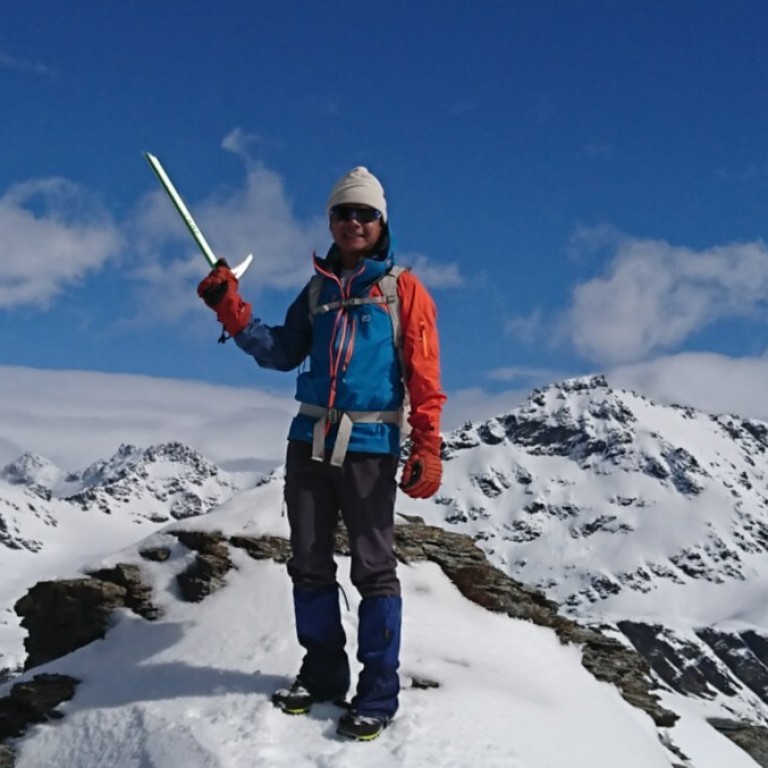
Hong Kong mountaineer, 67, on climate change, the moment he conquered Everest, and his next adventure
- Chung Kin-man looked down at Hong Kong from the top of Lion Rock aged 10 and was hooked. He’s been a mountaineer all his life, but still craves adventure
- He talks about never taking unnecessary risks, the tragedy of climate change, and his goal of climbing one or more 8,000-metre peaks in the Karakoram Range
At an age when most people’s ambitions stretch little further than going out to eat and spending time with friends and family, 67-year-old Chung Kin-man is making plans to scale one or more 8,000-metre peaks in the rugged Karakoram mountain range in Central Asia.
Chung – one of Hong Kong’s most committed adventurers – has a high achiever’s CV. He has climbed the world’s highest mountain and reached the North and South poles, and risked his life on several occasions. Yet he remains modest and unassuming.
“Almost throughout my life, I’ve achieved what I set out to do, and I’m very content – you can’t ask more than that,” says Chung, who lives with his wife, Ann Chan, in a village house in Sai Kung, in Hong Kong’s New Territories.
He had an epiphany when he was just 10 years old, on a hike up Lion Rock, a distinctively shaped peak on the Hong Kong skyline north of Kowloon. He lived down below in Diamond Hill, and had been intrigued by the sight of climbers heading into the hills. Once he went hiking above Kowloon himself, his grasp of the beauty and mystery of high places was instant and all-absorbing.

Chung took up climbing, but soon became frustrated by the lack of challenging ascents in Hong Kong. He read books on mountaineering in the nearby public library, and was drawn to their illustrations.
“I moved to Brussels to study graphic design – but I admit Europe and its mountains had captivated me, and Belgium was only a train ride away from the Alps,” says Chung, who still speaks French fluently.
Hong Kong adventurer in first climb of remote China peak
In 1978 he summited his first major peak – the 4,808-metre (15,774 foot) Mont Blanc, in the Alps on the border between France and Italy – and so began a lifelong love affair with extreme altitudes.
From the outset, Chung decided that, whenever possible, he would mountaineer by himself and pay his own way. Having acquired a working knowledge of outdoor clothing and equipment, he opened a shop, Chamonix Alpine Equipment, in Hong Kong’s Mong Kok neighbourhood, and by 1985 the store was providing a satisfactory income – enough to finance his mountaineering.
Following expeditions to the Alps and to the Pamirs in Central Asia, Chung hit the headlines in the run-up to a Hong Kong team’s first attempt on Mount Everest in 1992. With climbing buddy Cham Yick-kai, he used ropes to scale the exterior of the 27-storey World Wide House in Central in a publicity stunt to raise funds. It paid off, but the mountaineering expedition was not fated to end well for Chung.
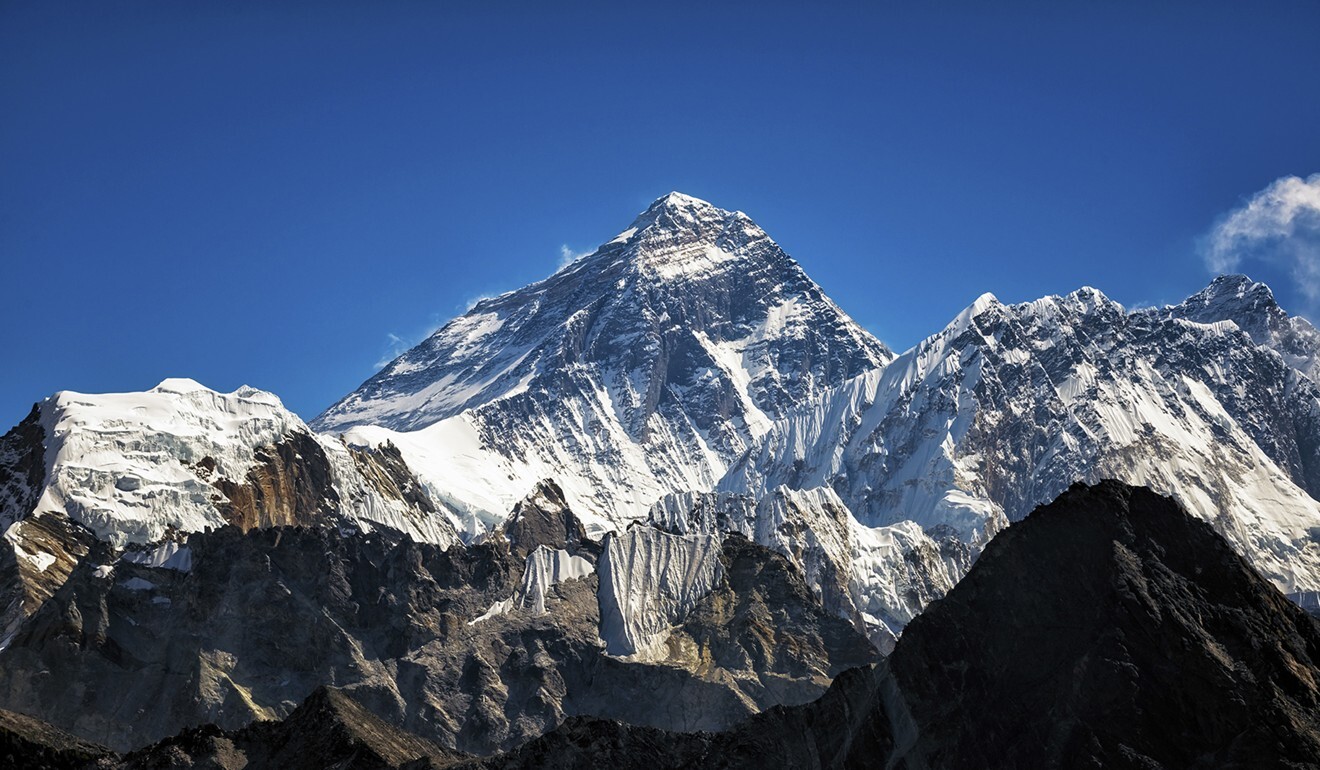
“I fell into a crevasse – just one leg went through the snow, and I was roped to a Sherpa who was right behind me and he saved my life,” he recalls.
Given what in retrospect seemed to have been a wasted effort, and following a very close brush with death, Chung’s interest in Everest waned for several years.
My overriding feeling was of deep and heartfelt satisfaction – I’d achieved my aim. I could only spend about 15 minutes at the top, but those 15 minutes will remain with me forever
“Then in 1998 I really got the bit between my teeth again,” he says. “I read about Mount Aconcagua in the Andes in Argentina. It’s just under 7,000 metres, and I felt I really had to climb it. So all of a sudden, I was back on the serious mountaineering circuit.”
After a successful ascent of Aconcagua, Chung felt the lure of the world’s highest mountain once more. The following year saw him back in Nepal, but once again the summit of Everest eluded him.
He did not set out for Everest lightly. Three years earlier eight people had perished in a blizzard on the mountain, including the New Zealand expedition leader Rob Hall, Chung’s long-time friend.
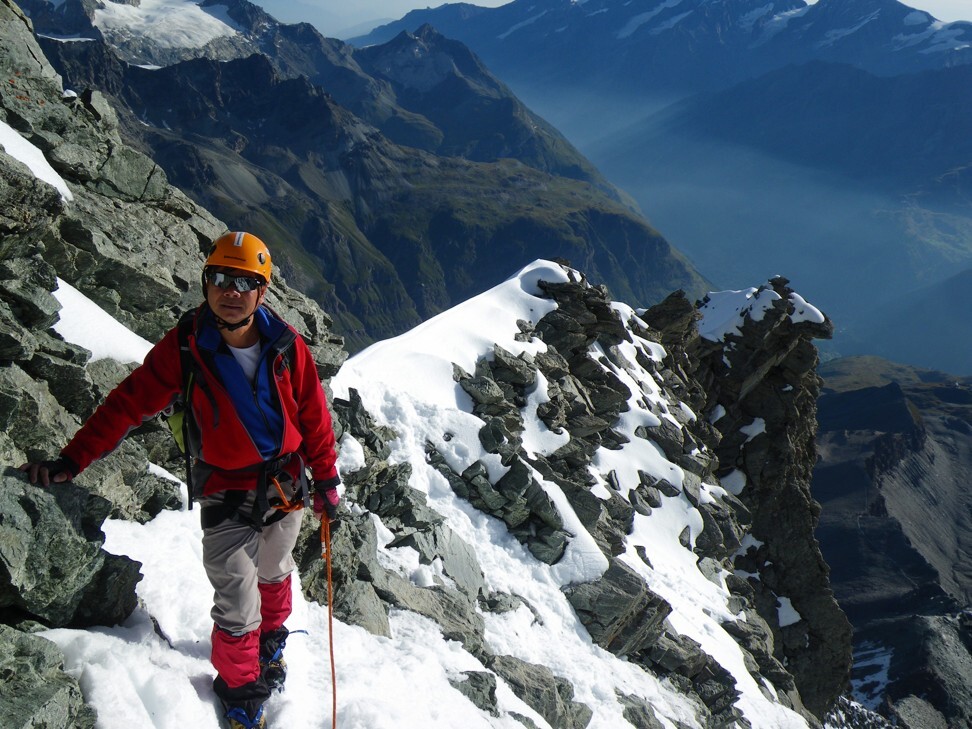
“Whenever and wherever I go, I always make this promise to my wife and family: I never take unnecessary risks and make sure I stay safe,” Chung says. “I’ve seen people die on Everest, so I know what the dangers are.
“It does not deter me from mountaineering, but I always make sure I know what the risks are and try my utmost to avoid them.”
Most of the world’s serious mountaineers have heard of the 7+2 Challenge. It comprises the highest mountain on each of the seven continents, plus the North and South poles. In 1982, Chung took up the challenge, and added Indonesia’s Carstensz Pyramid, the highest peak in Southeast Asia, to the list for good measure (there is a dispute as to whether one of the seven continents is Australasia, in which case only Mount Kosciusko in Australia needs climbing, or whether the continent is Australasia and Oceania, in which case Carstensz Pyramid also needs climbing).
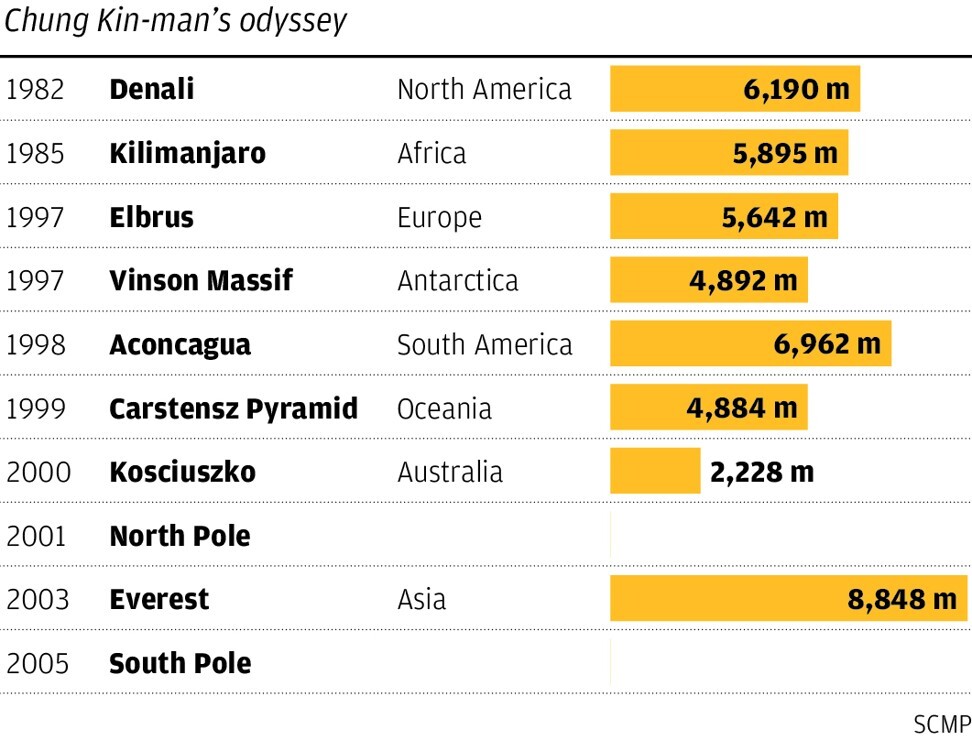
It took him 23 years to complete the challenge. “Some people say the highest point in that region is Mount Kosciusko, others that it’s Carstensz – I did them both so there can be no argument,” Chung says.
To date, he has been to the North Pole twice and to the South Pole once.
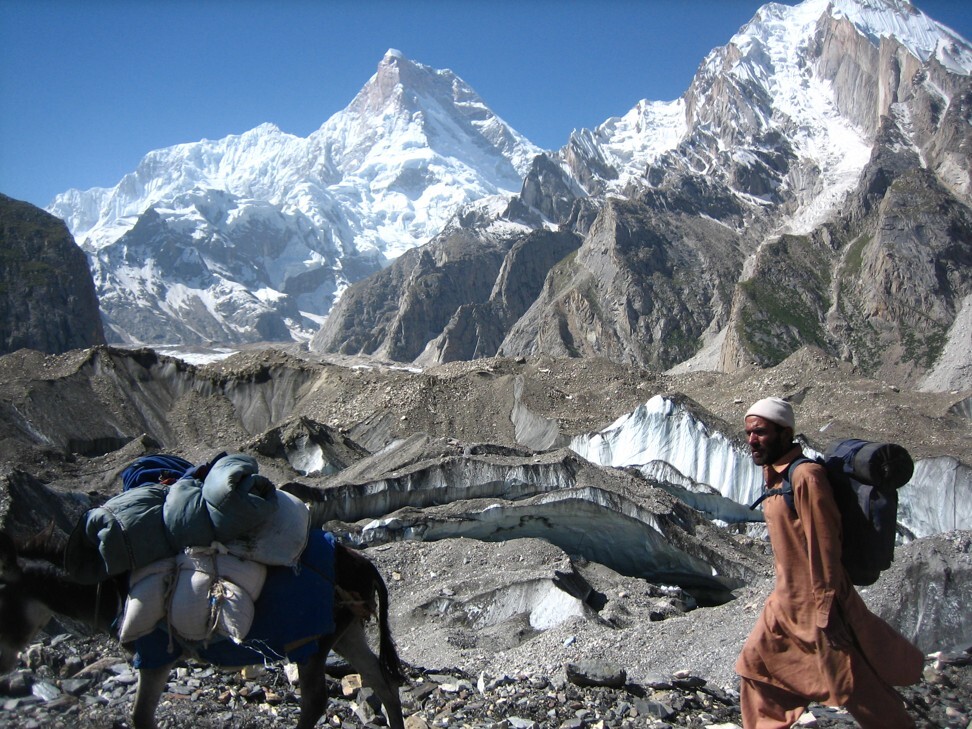
Chung’s exploits have marked him out. “We have known and admired Chung Kin-man for more than 20 years,” says Rupert McCowan, director of the Royal Geographical Society, Hong Kong. “It has been impressive to watch him climb Everest and complete the seven summits, a first for Hong Kong.
“From his base at his Kowloon mountaineering shop, he has become Hong Kong’s greatest locally grown mountaineer, and he works tirelessly with local schools and on climate change.”
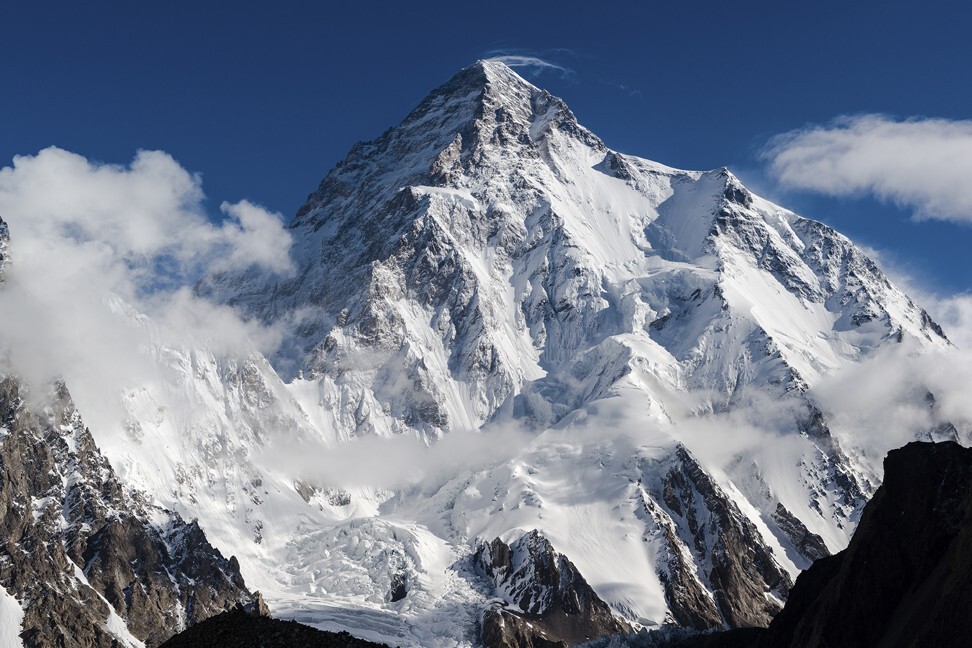
While his climbing career has been a central part of his life, Chung’s family has always been his prime focus. While his two daughters have not inherited his all-consuming passion for mountaineering, they are both expert skiers.
The challenges faced by the younger generation give Chung pause for thought, particularly the environmental devastation he has seen first-hand around the world.
“I went back to Mont Blanc in 1998, exactly 20 years after I first climbed it,” he says. “The first time it was fully covered by glittering snow, but the second time I had the unpleasant experience of seeing how far the glacier had retreated in just a few short years.
“It was a similar story at the North Pole. The icebergs were melting and we had trouble finding some solid ice to build a research and supply station.
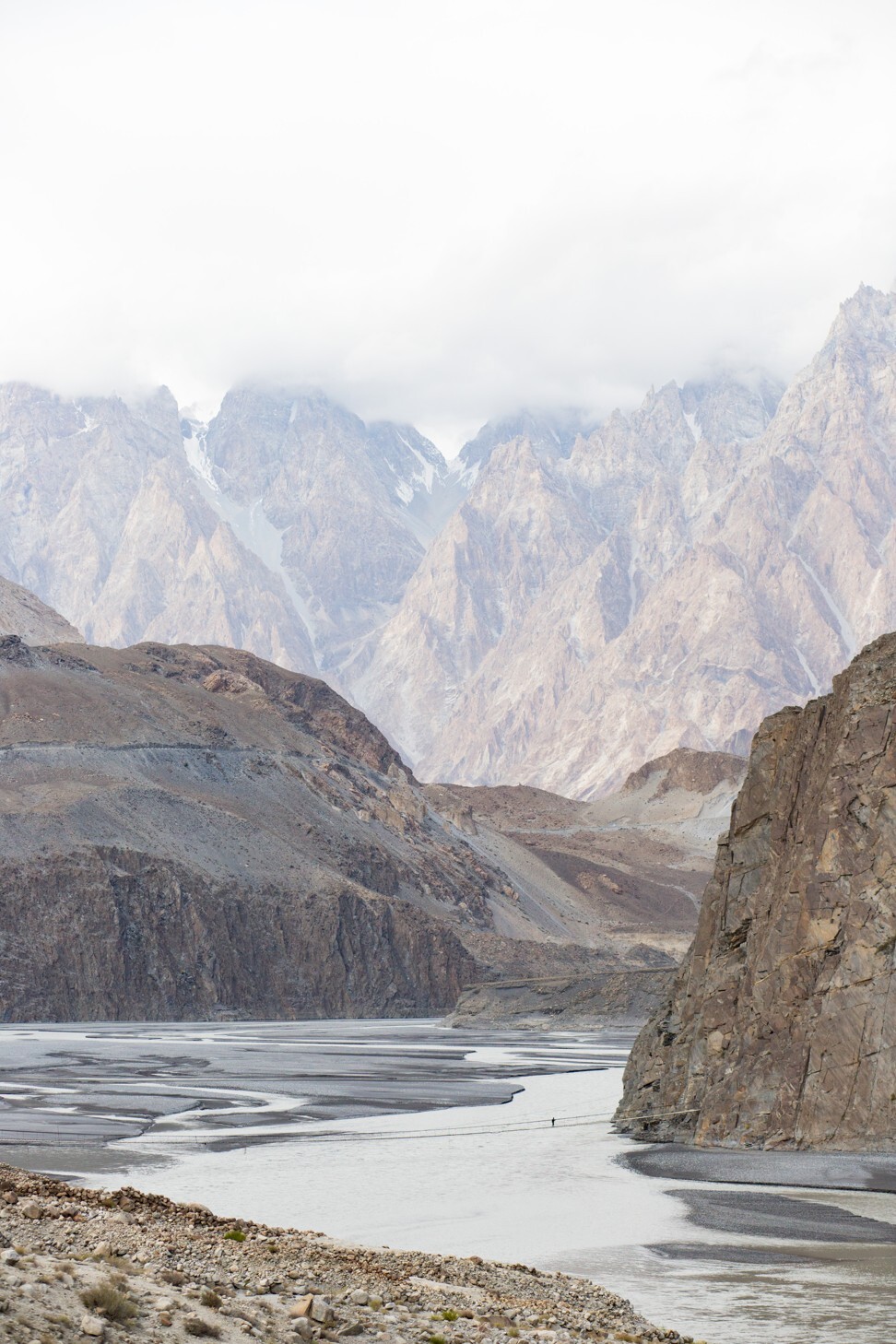
“What’s happening now is a tragedy. It’s not just that climate change is making it more difficult for mountaineers, but everything in the world is changing. Nature is sending us a warning. We need to act.”
Besides overseeing day-to-day operations at his shop and his secondary business, the Hong Kong Mountaineering Training Centre, Chung also lectures to schoolchildren about his peripatetic existence.
“Of course, very few of them will go on to become mountaineers,” he says. “But it’s enough to inspire them, and to suggest that you don’t just have to leave school and get a job. I see my role as expanding their horizons.”
Not surprisingly, Chung’s personal horizons are as broad as ever. “We can’t travel just at the moment, but as soon as the coronavirus restrictions are lifted I’m thinking about Pakistan,” he says.
“The Karakoram Range is the second-highest in the world, the terrain is utterly different to anywhere else, and there are [four] peaks over 8,000 metres. I’m not sure which one I’ll go for, but one thing’s for sure – I’ve got to go.”
Help us understand what you are interested in so that we can improve SCMP and provide a better experience for you. We would like to invite you to take this five-minute survey on how you engage with SCMP and the news.

